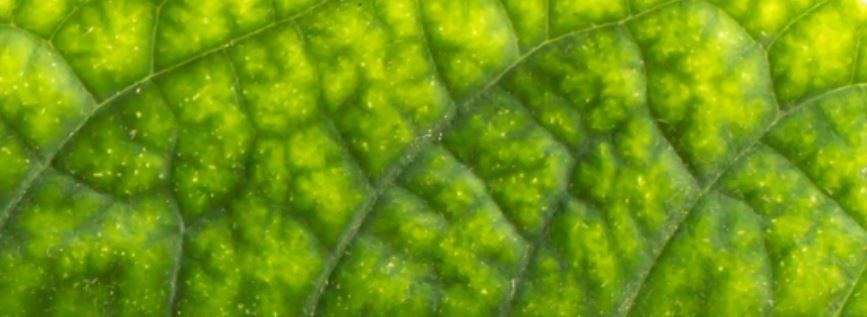Nutrient Shortage In Cannabis: A Magnesium Deficiency Story
Published :
Aug 23, 2017
Categories :
Cannabis cultivation

Make sure you have all the information you need to stop a magnesium deficiency in your cannabis plant. We show you how to prevent this occurrence and solve the issue if it happens to you.
Magnesium aids in the development of healthy plant veins, in the production of chlorophyll and the breaking down of enzymes.
Magnesium deficiency is a nutrient shortage very common to the cannabis plant. This is quite similar to an iron or calcium deficiency. Signs can be visually spotted on the plant and easily cured if you recognise the issue at an early stage. Deficiencies usually occur after the plant is one month old. It will be around 30cm in height and the deficiency will start to show on the bottom leaves.
HOW TO RECOGNISE IT
If you’re very attentive on a daily basis, you may start to see that the plant stagnates its growth. This might take you a couple of weeks to recognise.
The most common visual symptom of this deficiency will definitely be the colour change in the leaves. Yellow or light green colouring will start to appear on the veins and edges of the bottom leaves. The deficiency will continue to move upwards until the whole plant is infected and it eventually dies. At the beginning, brown, rusty-looking spots will appear amongst the yellowness of the leaf. If left untreated, the leaf will eventually curl up at the edges as a sign of death. These will also feel very rough and unhealthy to the touch.
Magnesium shortage happens most commonly in indoor grow rooms. So, if you start seeing yellow leaves on the plant in your closet, here is what to do.
SOLVING THE DEFICIENCY
Before doing anything else, make sure you measure the pH in the root zone. Although these deficiencies are most common with hydroponic growing methods, your soil might also suffer from this. An acidic pH will lock out essential nutrients like iron and magnesium. If the pH is low enough, the problem might not be the lack of nutrients, but rather the incapacity of the roots to collect them. The best way to treat this is to flush out your cannabis plant with clean, pH-optimised water. Make sure the water contains a normal dose of cannabis-friendly nutrients.
Magnesium is best absorbed by the roots when the soil has a pH between 6.0-7.0. If you run a hydro-plantation, the recommended pH is slightly more acidic, within 6.0-6.5.
The problem might also be in the lack of essential nutrients in your soil or water. If the above method does not seem to show any progress, a supplement will be needed. Look for a calcium-magnesium one. Apply around 5ml of Botanicare Cal-Mag Plus to every 3.7 litres of water and you’ll hopefully see an improvement in approximately a week.
Don’t cut the damaged leaves right away. These probably won’t go back to normal, but it’s a good way to see if the situation worsens. This way, they will die off before affecting the upper, newer leaves. Once you see the deficiency is gone, make sure to trim the unhealthy members.
FOR THE ORGANIC AND THE HYDRO
When it comes to 100% organic cannabis, growers face problems which many times can be hard to solve with organic solutions. Thankfully, for the nature fellas, there are solutions for you too. Dolomite lime has a neutral pH (7.0) and can be mixed up with your organic soil setup. Add 5-7 teaspoons of it to every 3.7 litres of soil. Mix the soil, dolomite and some slightly acidic water (pH 6.5). Make sure you wait a couple of days before you test the water’s pH and then move your plant in there.
For the hydroponic lovers, the solution will be the same for the indoor soil grow room, but under different conditions. Make sure you check for pH; if everything goes according to plan and you still have a deficiency, drain your reservoir. Add your normal supplements and a possible calcium-magnesium to the mixture. After checking the solution for pH, throw this back on the reservoir and wait for the results. Epsom salts are also a good option for hydro plantations. For every 3.7 litres of water in your reservoir, add a teaspoon of the product.
CHECKING FOR RESULTS
As mentioned above, don’t cut off your damaged leaves. These will be an excellent indicator of recovery. Unlike an iron deficiency, for example, leaves in a magnesium shortage won’t heal so commonly. You can cut them off when you’re sure the problem has been solved. It’s always better that if discoloration continues, this happens in the already damaged leaves. The last thing you want is to think you cured a nutrient shortage, only to see it reappear on new leaves.
Having nutrient deficiencies is completely normal and one of the most common problems that growers face with cannabis. Don’t worry about it. There is a lot of information out there and a lot of supplements to help you out. Just make sure that you learn a little bit more every time you’re faced with a new issue. Make sure you take notes (even if just mental ones) on what went wrong and what worked well. This way, you’re sure to succeed (or at least improve) next time. Good luck with your plant and happy harvest!








































